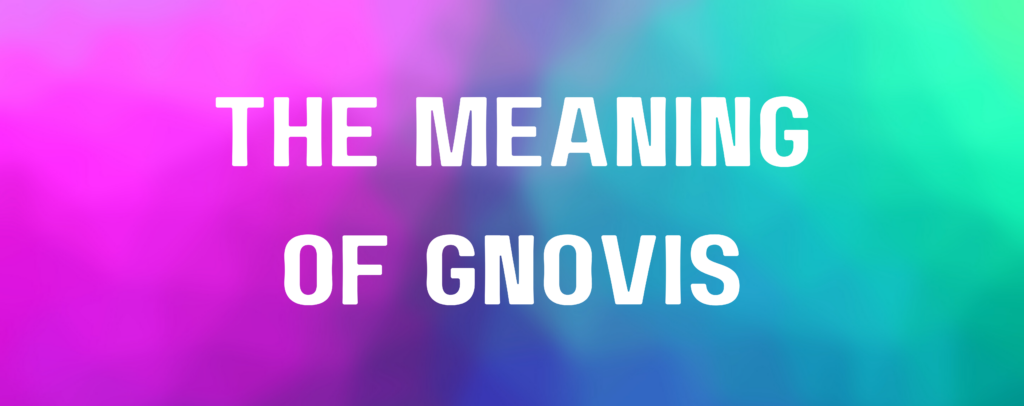About Gnovis

I. Our Mission
II. What We Do

gnovis (nō vĭs) strives to connect scholars across disciplinary borders by sharing discourse that crucially investigates the frontiers of knowledge within the fields of technology, media, politics, culture, and the arts.
At its nexus, gnovis is a peer-reviewed journal, academic blog, and podcast run by graduate students in the Communication, Culture & Technology program at Georgetown University.
We hope that gnovis can serve as a useful resource for all site visitors, whether you are a scholar, CCT student, a practitioner, or a mere passerby. We encourage any and all of you to read, listen, and even create with us! Reach out to us at gnovis@georgetown.edu if you have ideas for a journal article, blog post, or podcast.

The Gnovis Journal
The Gnovis Journal (See submission guidelines here) goes through a rigorous double-blind peer-review process. Peer-reviewers are selected from CCT students who demonstrate exceptional academic achievement, experience in engaging with a certain blend of topics in their own studies, and are able to discriminate exceptional scholarship that shows a commitment to furthering the values of interdisciplinary scholarship in both academic and professional endeavors.
The Gnovis Editorial Team publishes journal issues annually, at the end of each Spring semester. Submissions are accepted throughout the academic year, with the deadline set in early March.
The Gnovis Blog
The Gnovis Blog features a monthly forum for discussion and an exchange of ideas particularly as they relate to current events (See blog submission guidelines here). The platform includes both ongoing commentary from our staff, as well as posts from students and academics at all levels. Topics vary but are drawn together by their relevance to the gnovis mission.
The Gnovis Podcast
Interdisciplinary research does not occur in a vacuum, nor is it restricted to academic papers. As an online journal, we have the opportunity to explore the dialogue between disciplines in new and creative ways. The Gnovis Podcast presents off-the-page scholarship and aims to explore CCT-related themes as they occur in other academic and professional settings, molding cutting-edge scholarship with multi-media journalism.
The Gnovis Podcast allows for the exchange of interdisciplinary ideas and theories to reach the radio waves. The podcast features guest speakers and gnovis staff as hosts (See our podcasts here).

Our name, gnovis is a hybrid of the first syllables from the Greek word, gnosis “knowledge”, and the Latin word, visus “sight”. Our founders in 2000 wanted to build upon the classic idiom, “seeing is believing,” taking it one step further by utilizing a dead language in conjunction with classic liberal arts gravitas in order to highlight that the knowledge we gain at CCT is more than simply introspective “insight,” but is instead something that looks forward with creativity, imagination, and future-thinking orientation: knowledge with vision.

gnovis began in the fall of 2000 as a student-organized project aimed at utilizing the Internet as a forum and tool for propagating CCT students’ work.
The very first launch ceremony featured notable multimedia panelists such as Wired.com’s Washington Bureau Chief Declan McCullough. The panelists noted that the task of creating a periodical publication with such a broad content area posed major challenges. However, the students and faculty at CCT remained committed to the value of maintaining a trans-disciplinary journal.
Back in the Web 1.0 era, life was different. The most advanced mobile device available was a Palm OS-powered Kyocera cell phone with 8MB of memory (picture below). Our massive multimedia landscape today sits in stark contrast to the world gnovis was born into.

Today, gnovis strives to continually evolve. The team is challenged every year by the need to balance the inspired ideas of a new gnovis team with the original vision of the gnovis project.
The earliest version of the gnovis website was rather like an e-magazine, featuring a number of journalistic panels, a showcase of student work, faculty publications, and syndicated 3rd party newsfeeds pertaining to CCT.
In early 2002, gnovis relaunched its website, temporarily, to prepare for a new emphasis on scholarly articles.
In the summer of 2002, gnovis received a boost when The Center for New Designs in Learning and Scholarship (CNDLS) provided the project with temporary development resources in exchange for a section dedicated to innovation in teaching and learning, which was featured prominently on the next website, which launched in November, 2002 and persisted through August, 2007.
This version of the site continued the prior emphasis on scholarly articles, and attempted to diversify gnovis footprint by incorporating multimedia projects.
In August 2007, seeking to update the gnovis website to reflect half-a-decade of evolution of the web (including the Web 2.0 revolution), gnovis relaunched its website yet again using Drupal. The current site runs on WordPress and was relaunched in 2011. gnovis hopes this more flexible, extensible platform will empower future gnovis staffs to continue to evolve the site and keep up with the rest of the Internet.
GNOVIS IS SPONSORED BY:
Communication, Culture & Technology
3520 Prospect Street NW, Suite 311
Washington, D.C. 20057
Phone 202.687.6618 | Fax 202.687.1720
